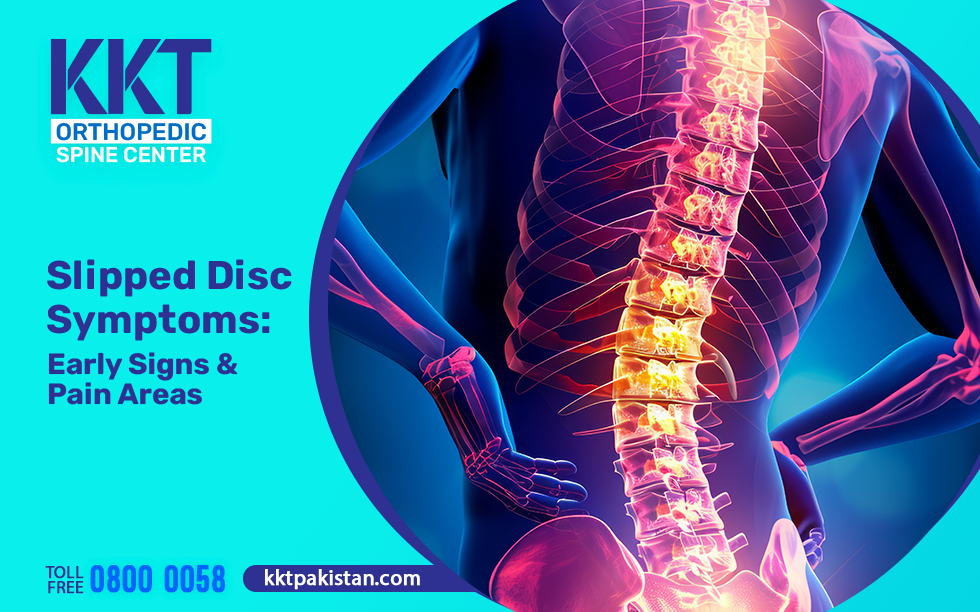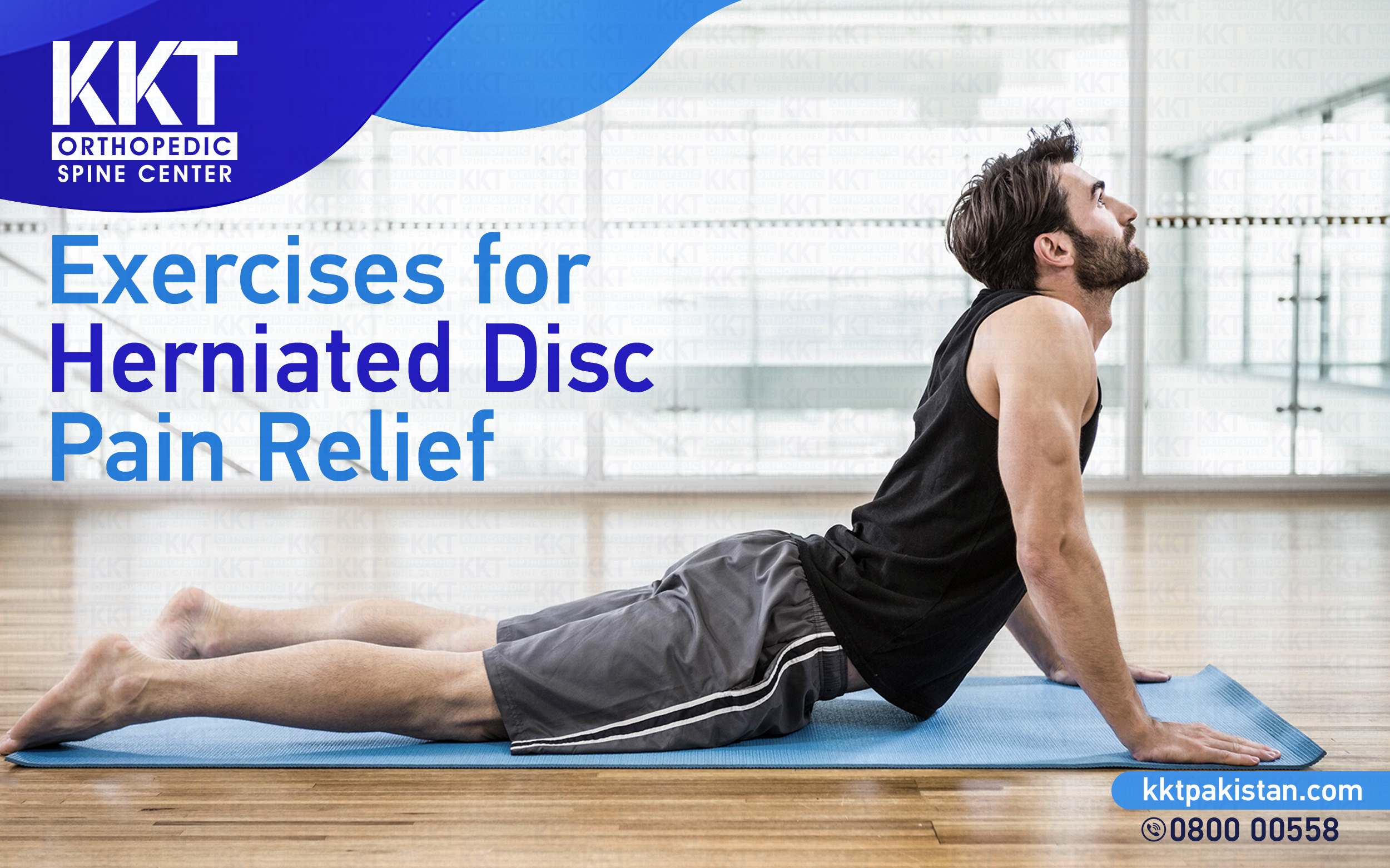Slipped Disc Prevention: Essential Tips & Best Practices
Table of Contents
Intervertebral discs in the spine allow flexible movements. However, these discs are 80% water (spinal fluid), which acts as a shock absorber and cushions your spine during activities such as jumping and bending forward.
Now, imagine if one disc cushioning of your spine moves out of its place, creating a tear that allows its inner material to push outward. What will happen then? It will cause you debilitating pain, leading to a disc bulge, slipped disc, sciatica, and back pain.
Understanding this condition is crucial. In this blog, we will explore how proactive care and informed choices can help safeguard your spinal health and help in slipped disc prevention.
Understanding Slipped Disc & Its Causes
A slipped disc is a condition in which soft, jelly-like material in between the discs of vertebrae pushes through a tear in its more rigid exterior. When this leaked material protrudes, it can compress nearby nerves, leading to pain, numbness, and weakness that often radiates down an arm or leg.
The most common causes of slipped discs are being overweight, a physically demanding job, lifting, pulling, bending, or stressing the spine from excessive workouts. However, over time, our spine becomes dehydrated and brittle. This process is known as disc degeneration, which is the primary cause of a slipped disc. People aged between 30 and 50 are at the highest risk of a slipped disc, according to the survey, with men being the most affected, as noted in the study. Furthermore, people with a genetic history are also prone to a herniated disc.
Preventive Measures of a Slipped Disc
Protecting yourself from a slipped disc is deeply rooted in the conscious choices you make in your daily lifestyle. Maintaining a healthy weight is helpful, as excess pounds place constant, undue stress on your spinal discs. However, there are ways of preventing slipped discs. If your job is physically demanding, prioritize proper lifting techniques to avoid sudden strain.
Furthermore, practicing correct posture plays a significant role in preventing slipped discs, while sitting, standing, and sleeping ensure that your spine is aligned and not under uneven pressure.
Finally, supporting your body with a nutritional diet and keeping yourself well-hydrated provides the essential building blocks and fluidity your discs need to stay healthy and resilient, acting as effective shock absorbers for your spine.
What to Avoid with a Slipped Disc?
Avoid chores that require you to bend forward, such as doing laundry, vacuuming, or shoveling. Moreover, in an office environment, keep items closer to you so that you don’t have to bend or twist your spine to access them. Furthermore, avoid twisting your spine, as it places significant, asymmetrical stress on the discs and can worsen a slipped disc by increasing pressure on the already damaged outer layers, potentially pushing the inner material (nucleus pulposus) out further.
Exercises and specific movements are often recommended for spinal health. But they can place excessive strain on the discs in your lower back. Some exercises, such as jogging, squats, sit-ups, golf, tennis, and specific yoga poses that involve forward bending, can be strenuous and place pressure on the disc; therefore, it is advisable to avoid these.
Posture & Movement: Dos and Don’ts
Proper Posture is hinged to safeguard your spinal health. Some specific things should be followed. Select a supportive chair that allows you to sit with your feet flat on the floor and your knees level with your hips.
Furthermore, use a small lumbar roll or towel to maintain your spine’s natural curve. Avoid slouching and prolonged sitting without taking a break. Additionally, for lifting, the major don’ts are to never bend from the waist. Instead, hinge at your hips and bend your knees. Keep the object close to your body as you lift with your leg muscles. Absolutely avoid combining twisting and lifting simultaneously.
Generally, the best slipped disc prevention is to avoid high-impact activities, sudden jerking motions, and exercises that involve forceful twisting or excessive forward bending of the lower back (like toe-touches or full sit-ups), as these place asymmetrical and heavy loads on the spinal discs.
Sleeping & Resting Habits for Spinal Health
Many people believe in the myth that spinal issues improve by lying down. But the fact is that lying down alone will not improve a slipped disc. However, resting and sleeping are essential foundations for recovery when dealing with a slipped disc. However, they are not a long-term solution for preventing slipped discs. Lying down for a while is suitable for your condition. However, resting in a supported neutral position can alleviate pressure on the nerves and facilitate healing.
The top two best sleeping positions for optimal spinal support are
- Lying on your sides with a pillow between your legs
- Lying on your back with the pillow under your knees to maintain the natural curvature of the spine.
Moreover, choosing the right and firm mattress to support your back is an investment that will prevent your spine from sagging, along with a supportive pillow that keeps your neck in line with your spine.
Maintaining a Good Balance Between Activity & Rest
Prolonged inactivity can weaken your core and spinal muscles. Weaker muscles provide less stability, making them vulnerable to reinjury and pain. The best option is to find the balance between mindful movement and strategic rest.
There are therapeutic exercises that help ensure the flow of nutrients to the spinal discs and strengthen the surrounding spinal muscles, such as plank, press-up, pelvic tilt, and bird-dog exercise. Even walking for 30-45 minutes also prevents stiffness. Alternatively, a rest period will allow inflamed tissues to heal. This approach will build a resilient foundation for long-term spinal health and ensure active recovery. If you follow this healthy regimen, it will keep your muscles in motion and help build strength, which ultimately aids in preventing slipped discs.
Supportive Therapies & Precautions For Slipped Disc Prevention
A gentle stretching routine prescribed by a physical therapist or doctor is foundational in relieving slipped disc pain. However, it improves flexibility, reduces muscle tension, and promotes blood flow to support the spinal structure.
A doctor may recommend a back brace in cases of specific injuries. They provide stability and relief after injury or surgery and limit harmful movements. However, these are not advisable for long-term use or for preventing slipped discs.
Massages reduce muscle spasm and are effective in relieving the surrounding muscles in herniated discs. But it should be performed by a qualified professional who is aware of your diagnosis. Intense pressure on the spine should be avoided, and the goal is to soothe spinal muscles without aggravating the discs.
Long-Term Spine Care & Slipped Disc Prevention
Investing in your spinal care, whether through your time or minor lifestyle changes, can have a significant impact on the quality of your life. Daily stretches, such as planks, bridges, or simply stretching your body, can help strengthen your muscles. Regular walking keeps your body in motion.
Moreover, be mindful of your posture and keep yourself hydrated, as hydration is essential for the health of your spinal discs. Staying well-hydrated is necessary for maintaining their shock-absorbing plumpness. By making conscious choices every day, you establish a resilient foundation for a strong, healthy spine that will last for years to come.
Using Heat & Cold Therapy for Muscle Relaxation
It is an effective key for spinal care to understand when to use a heat pack versus a cold pack.
Heat therapy is most effective in preventing stiffness and strain. Tight muscles in the back increase blood flow, which improves flexibility and relaxation. However, this makes the area less susceptible to injury during activity.
Ice packs are most effective when applied to a new injury or flare-ups. This reduces inflammation and sharp pain caused by constricting blood vessels. The best practice is to follow the simple rules: use ice for acute injuries within the first 48 hours to reduce inflammation, and use a heat pack for stiffness.
It is emphasized to always protect your skin with a cloth barrier and limit applications to 15-20 minutes at a time. And listen to your body if one worsens your symptoms, stop and try the other.
The Role of Alternative Therapies in Prevention
There are proactive alternative therapies for overall spinal care and slipped discs.
- Acupuncture is believed to help prevent issues by promoting relaxation, improving local blood circulation, and reducing muscle tension, which can alleviate compensatory stress on spinal discs.
- Chiropractic care focuses on maintaining proper spinal alignment and joint mobility through chiropractic adjustments and preventing nerve irritation and muscular imbalances that contribute to disc problems.
- Hydrotherapy offers unique benefits; the buoyancy of water unloads pressure from the discs and vertebrae, allowing for low-impact strengthening of the core and back muscles, which are the ultimate supporters of spinal integrity.
Conclusion
If you experience persistent back pain, it is crucial to take preventive measures to maintain your spinal health. Furthermore, maintaining a healthy lifestyle and exercising daily helps keep your body in motion. Our posture matters in everyday life. While sleeping, sitting, or standing. Maintain correct posture, which will help avoid putting extra pressure on your spine and help prevent slipped discs.
Moreover, some therapies will help you relieve pain from slipped discs. KKT Treatment is one of the non-invasive options for treating a slipped disc. This treatment is done through Quantum Acoustic Waves (Sound Waves). This procedure has proven effective in relieving pain and regaining spinal health.
To learn more about herniated discs and their non-invasive treatment options, visit our experts at one of our centers, schedule an appointment, or call 0800-00-558.
Frequently Asked Questions
- How can I naturally prevent a slipped disc?
Maintain a strong core and back muscles through regular exercise, practice good posture (especially when sitting and lifting), maintain a healthy weight, avoid smoking, and stay hydrated.
- What is the best way to sit to prevent a slipped disc?
Use lumbar support. Sit with your back straight and your feet flat on the floor. Your knees should be level with or slightly below your hips, and take breaks every 30 minutes.
- Can stretching help prevent spinal disc problems?
Yes. Stretching improves flexibility and reduces tension on the spine. Simple stretches, such as those for the hamstrings and hip flexors, are helpful.
- Should I wear a back brace to prevent disc issues?
A back brace can not prevent disc issues. Professionals recommend it for injuries and heavy lifting.
- Can a chiropractor help prevent slipped discs?
A chiropractor can advise on spinal health and posture. However, ensure any adjustments are gentle. High-velocity manipulations on a vulnerable spine could risk injury. Always choose a licensed professional.
- What are the worst activities for my spine?
Heavy lifting with a rounded back, prolonged sitting, high-impact sports with twisting motions (like golf or tennis without proper form), and sudden, awkward movements are among the worst.
- Can wearing improper footwear contribute to back problems?
Yes. High heels or worn-out flats disrupt spinal alignment, shifting your posture and increasing stress on your lower back and discs.
- Are back massages safe for preventing slipped discs?
Generally, yes. Gentle massage improves blood flow and reduces muscle tension that supports the spine. Avoid applying deep, intense pressure directly to the spine, and always inform your therapist about any existing pain.






